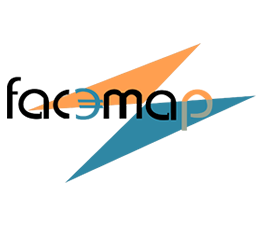Content

Are you looking for more detail on finance and operating lease accounting under ASC 842? Our Ultimate Lease Accounting Guide includes 44 pages of comprehensive examples, disclosures, and more. During this time, you are paying rent as agreed on the operating lease for using the asset. In simpler terms, an operating lease is where your business “rents” an asset to use for a specific period. Operating leases used to not be documented on balance sheets, which is why U.S. firms often classified as many leases as possible as an operating lease. Operating leases are formed by a lease agreement, and the lessee doesn’t own the property being leased.
- With Lucernex, lease data management is streamlined, calculations are automated, and precise financial reports are generated, ensuring transparency and accuracy in lease accounting practices.
- It’s important to check in with the manufacturer early in the process and plan accordingly.
- Suppose that at the end of the lease term, the ownership of the leased equipment is anticipated to transfer to the lessee – i.e. a corporation – upon receipt of the final lease installment payment.
- In addition, if a lease commences “at or near the end” of the asset’s economic life, the lease term criterion is not used and the lease classification conclusion is based only on analysis of the other four factors.
Now, ASC 842 requires operating leases to be recognized on the balance sheet as both an asset and a corresponding liability. These new presentation requirements provide better representation of lessees’ obligations to investors, creditors, and other financial statement users. With the example of equipment specifically designed or remodeled to fit the business need of the lessee, these contracts will typically be considered finance leases already because https://www.bookstime.com/ the lessor still needs them to be profitable. The lessor likely structured the contract so the lessee will use the specialized equipment for the majority of its useful life or the lease payments equal substantially all of its fair value. It’s important to note that by recognizing both the leased asset and the lease liability on the balance sheet, capital leases can have a significant impact on a company’s financial ratios and financial position.
Many Businesses Take Advantage of Both Types of Leases
Under current US GAAP (ASC 842), public and nonpublic entities follow a two-model approach for the classification of lessee leases as either finance or operating. Lessors must classify leases as sales-type, direct financing, or operating. Lease classification determines how and when expense and income are recognized, and what type of assets and liabilities are recorded. From a business perspective, capital leases are agreements which behave like a financed purchase such that a company can spread the acquisition cost of an asset over a period of time.
Leasing is an opportunity to grow your business in a sustainable way. Instead of purchasing large ticket items outright, these two finance leases provide an alternative that may work better for cash flow. A capital lease is a contract entitling a renter to the temporary use of an asset and has the economic characteristics of asset ownership for accounting purposes. If none of these criteria are met and the lease agreement is only for a limited-time use of the asset, then it is an operating lease. The notable difference between a capital lease and an operating lease is that for an operating lease, the asset must be returned to the owner at the end of the lease term.
Capital Lease or Operating Lease
As accounting standards may vary between countries and regions, it’s essential to consult with a qualified accountant or financial professional for specific guidance and compliance. With Lucernex, lease data management is streamlined, calculations are automated, and precise financial reports are generated, ensuring transparency and accuracy in lease accounting practices. The software simplifies lease classification, monitors lease terms and conditions, calculates lease payments, and facilitates proper recognition of lease assets and liabilities on the balance sheet. By harnessing the power of Lucernex, businesses can enhance efficiency, reduce errors, improve financial reporting, and make more informed decisions regarding lease-related matters. New accounting rules were issued for leases by the Financial Accounting Standards Board (FASB) in 2016. All leases over 12 months are required through these new rules to be documented on the business balance sheet as both liabilities and assets.
When a lease is classified as a capital lease, the present value of the lease expenses is treated as debt, and interest is imputed on this amount and shown as part of the income statement. We would make the argument that in an operating lease, the lease payments are just as much a commitment as lease expenses in a capital lease or interest payments on debt. Converting operating lease expenses into a debt equivalent is straightforward. The operating lease payments in future years, which are revealed in the footnotes to the financial statements for US firms, should be discounted back at a rate that should reflect their status as unsecured and fairly risky debt.
Summary Table for the Two Types of Leases
The standard required that operating leases only needed to be accounted for on the income statement, and did not need to be recorded on the balance sheet. Considering the leasing agreement features an ownership transfer – one of the conditions that qualify a lease as a capital lease – the lease is treated throughout the lease term as if the corporation is the owner. The corporation is therefore obligated to capitalize the lease on its financial statements to comply with U.S. It’s important for companies to distinguish between capital leases and operating leases as the accounting treatment can significantly affect a company’s financial ratios and overall financial position.
As an approximation, using the firm’s current pre-tax cost of debt as the discount rate yields a good estimate of the value of operating leases. There are two types of leases, operating and capital leases, each with different accounting methods that can have a significant impact on taxes owed by the business. An operating lease is treated like renting, and lease payments are considered operational expenses. A capital lease is treated like a loan, and the asset is considered owned by the lessee. A capital lease is like ownership, the lessor books both an asset and a liability in the amount of the net present value of the lease payments. An operating lease on the other hand is like renting, no asset or liability is booked.
Interested in a worry-free lease accounting experience and want a demo? In an operating lease, the lessee must maintain the property and return it or an equivalent at the end of the lease in as good a condition and value as when leased. If the lease does not meet any of these conditions then your lease will, by default, be qualified as an operating lease and accounted for as such. From Year 1 to Year 4 – the four-year lease term – the ROU asset is reduced by the depreciation expense until the asset’s value declines to zero (i.e. “straight-lined”), meaning that the annual depreciation is $93k per year. Suppose a company has agreed to borrow an asset for a four-year lease term with an annual rental expense of $100,000 and an implicit interest rate of 3.0%.
Capital leases and operating leases appear very differently in accounting. The total lease expense booked under ASC 842 for operating leases is comprised of an asset lease expense and a liability lease expense and is equal to the total amount of required cash payments allocated operating lease vs capital lease evenly over the lease term. The liability lease expense represents the interest accrued on the lease liability each period and the asset lease expense represents the amortization of the lease asset. Operating and capital leases are two types of treatments of equipment leases.
Create a free account to unlock this Template
He thinks it is going to get plenty of use and decides to go with a lease. An easy way to remember the difference is that a capital lease is like ownership, the item you lease is an asset, and the lease is a liability. No asset or liability is involved, just a monthly expense for the lease payments.






